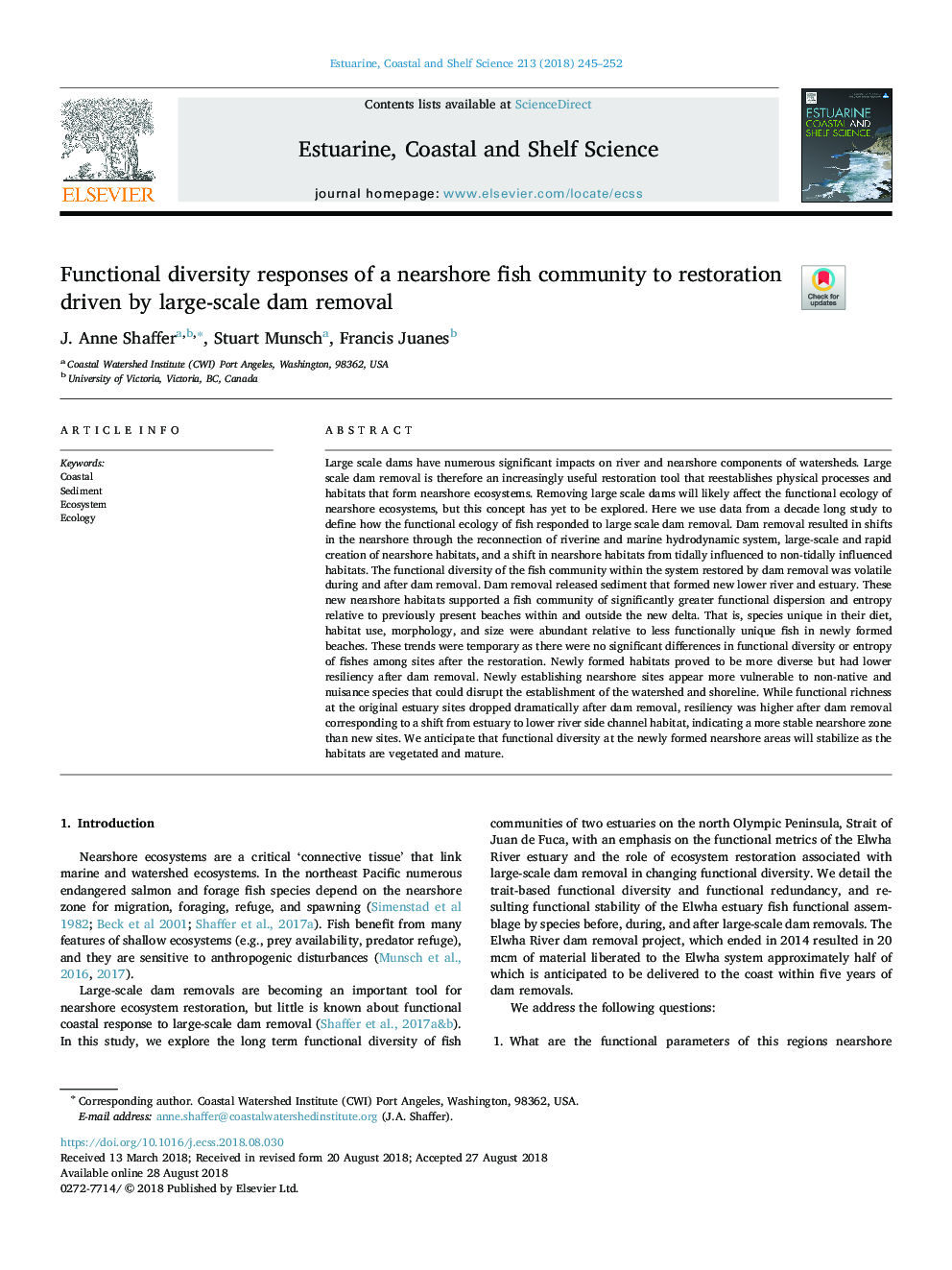| Article ID | Journal | Published Year | Pages | File Type |
|---|---|---|---|---|
| 10117758 | Estuarine, Coastal and Shelf Science | 2018 | 8 Pages |
Abstract
Large scale dams have numerous significant impacts on river and nearshore components of watersheds. Large scale dam removal is therefore an increasingly useful restoration tool that reestablishes physical processes and habitats that form nearshore ecosystems. Removing large scale dams will likely affect the functional ecology of nearshore ecosystems, but this concept has yet to be explored. Here we use data from a decade long study to define how the functional ecology of fish responded to large scale dam removal. Dam removal resulted in shifts in the nearshore through the reconnection of riverine and marine hydrodynamic system, large-scale and rapid creation of nearshore habitats, and a shift in nearshore habitats from tidally influenced to non-tidally influenced habitats. The functional diversity of the fish community within the system restored by dam removal was volatile during and after dam removal. Dam removal released sediment that formed new lower river and estuary. These new nearshore habitats supported a fish community of significantly greater functional dispersion and entropy relative to previously present beaches within and outside the new delta. That is, species unique in their diet, habitat use, morphology, and size were abundant relative to less functionally unique fish in newly formed beaches. These trends were temporary as there were no significant differences in functional diversity or entropy of fishes among sites after the restoration. Newly formed habitats proved to be more diverse but had lower resiliency after dam removal. Newly establishing nearshore sites appear more vulnerable to non-native and nuisance species that could disrupt the establishment of the watershed and shoreline. While functional richness at the original estuary sites dropped dramatically after dam removal, resiliency was higher after dam removal corresponding to a shift from estuary to lower river side channel habitat, indicating a more stable nearshore zone than new sites. We anticipate that functional diversity at the newly formed nearshore areas will stabilize as the habitats are vegetated and mature.
Related Topics
Physical Sciences and Engineering
Earth and Planetary Sciences
Geology
Authors
J. Anne Shaffer, Stuart Munsch, Francis Juanes,
